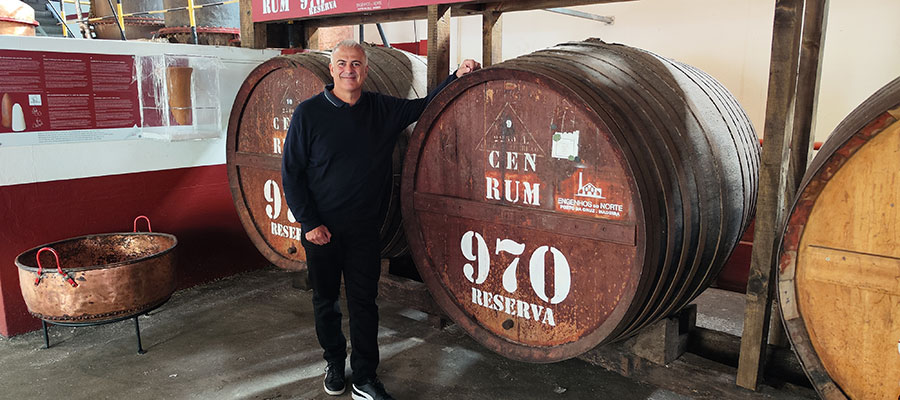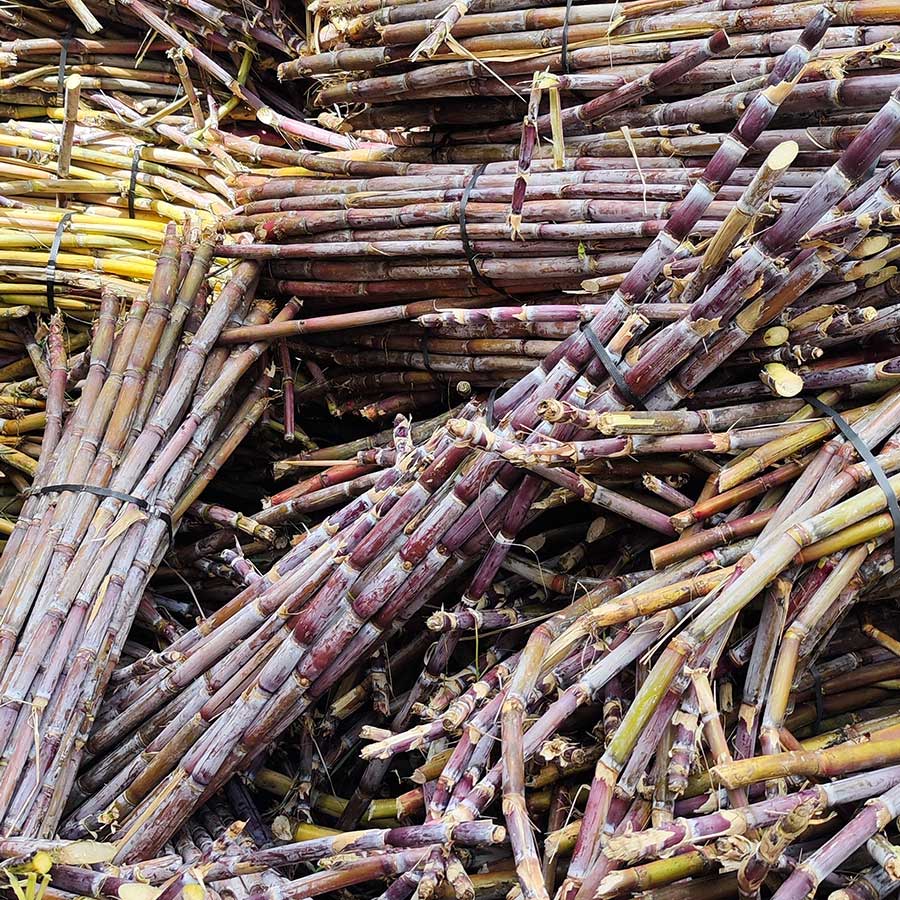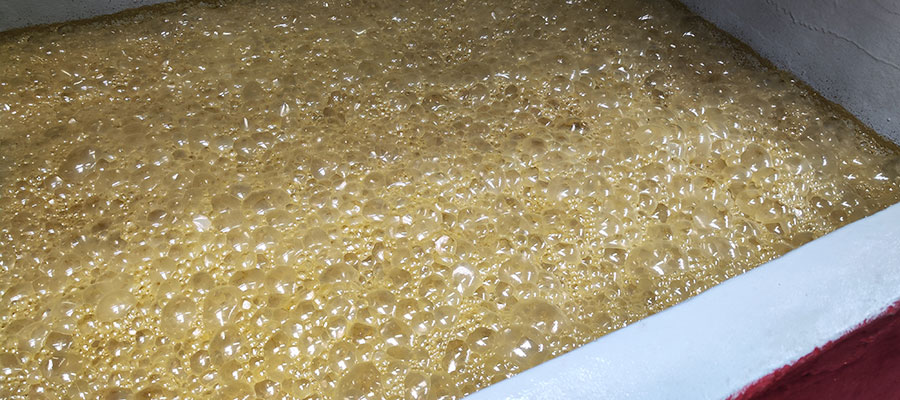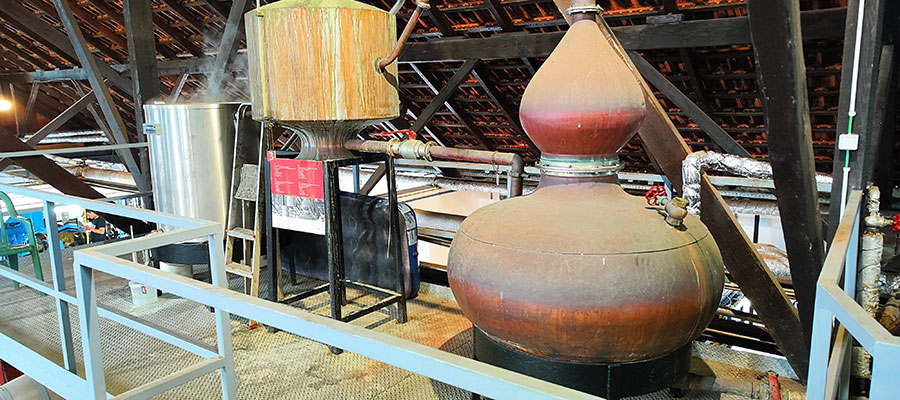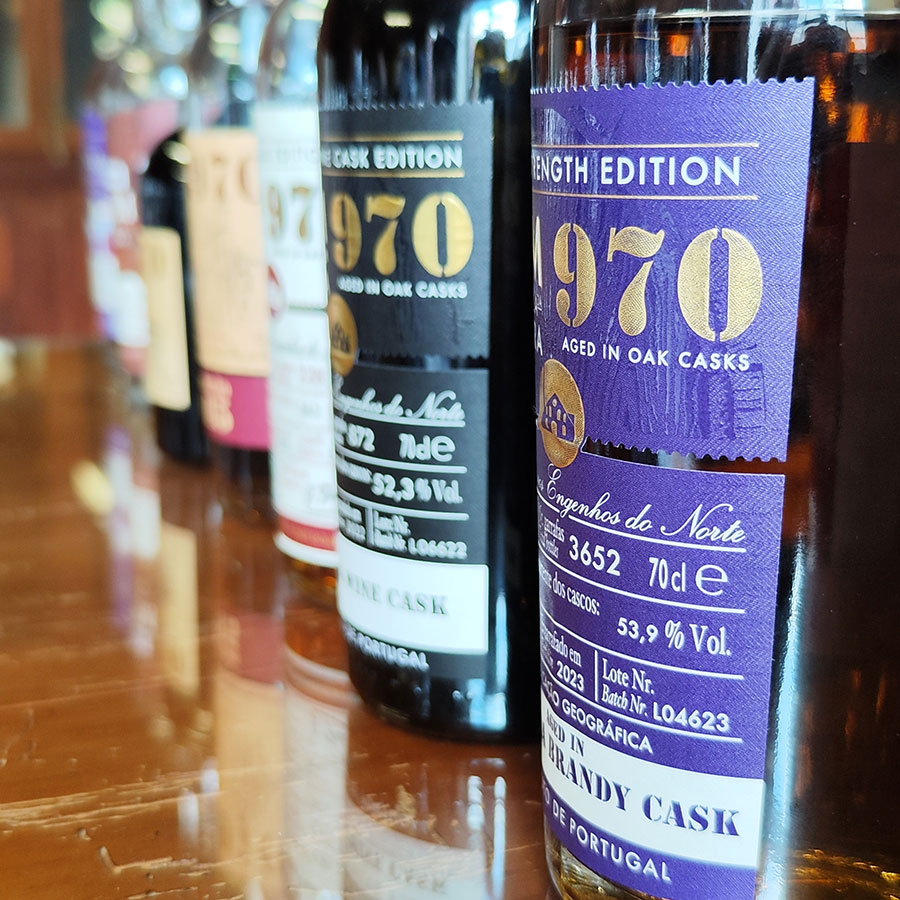Here’s a guided tour of the largest distillery on the Portuguese island of Madeira. You’ll also learn how Madeira rums are produced.
By Javier Herrera (English Translation : Asim Raza)
Madeira is a group of subtropical islands belonging to Portugal, located off the coast of Morocco and to the north of the Canary Islands, with which they share the same volcanic origin. Here, sugar cane has found the ideal conditions for optimal growth.
There are few places like Madeira, where water is so abundant and the soil so fertile. On this island, you can swim on a beach where a freshwater waterfall cascades into the sea. To travel to Madeira is to dream and enjoy. From the hospitality of its inhabitants towards foreigners, its rich gastronomy, its wines, its verdant paths and, of course, its rums.
A postcard distillery
In the village of Porto Cruz, you’ll find an old distillery located near a beach and surrounded by the sea, a privileged place for rum production. It’s a picture-postcard setting! The distillery is none other than Engenhos do Norte, one of Madeira’s three oldest working distilleries.
This engenho (factory, mill) was built in 1927, following the unification of some fifty distilleries existing on the island at the time. It still smokes the machinery of that era, being the only one in Europe to use steam as its motive power. The distillery is a magnificent rectangular building built of basalt masonry and lime mortar, with a high, double-sloped roof and lined with wood on the inside.
Leaning against the north side of the building is a tall, cylindrical, red-brick chimney. Rum production is entirely agricultural and 100% Madeira. To ensure this, a body called the Madeira Wine Institute protects the entire process and compliance with European Union regulations.
The Madeira Rum GI
Madeira rum is a “European Union Geographical Indication”, which means that the rum is protected by the island’s Geographical Indication rules. Madeira rum is also classified as an “agricultural rum”, as it is obtained exclusively from the alcoholic fermentation and distillation of sugarcane juice. Its unique characteristics and qualities are due not only to traditional production processes, but also to the experience of dedicated generations who have enhanced and improved its production.
The Geographical Indication (GI) for Madeira Rum is based on a series of conditions and prerequisites that must be met for a rum to be considered as such. These include:
1. Geographical origin: the rum must be produced on the island of Madeira, known for its subtropical climate, fertile volcanic soil and unlimited water, ideal for growing sugar cane.
2. Raw material: the sugar cane used to produce the rum must be 100% Madeira, which means it must be grown on the island. Different types of cane can be used, such as Canica, Blanque and Rouge, which bring different characteristics and flavors to the rum.
3. Production process: the rum production process must include sugarcane crushing and fermentation of the cane juice, followed by distillation. The minimum alcoholic strength of Madeira rum must be 37.5% by volume, in compliance with European Union standards. The addition of caramel as a means of adjusting colour is also permitted.
4. Aging: Madeira rum must be aged in oak casks for at least three years. This is an important requirement for Madeira rum, and barrels must bear GI seals for opening and inspection.
Agriculture
Growing sugar cane is a fairly difficult task in Madeira, due to the island’s mountainous topography with little flat land. Engenho del Norte works with around 500 farmers to supply the raw material. These are small farmers, which makes the work even more difficult. Harvesting is done by hand, surprisingly cutting or breaking the cane from below once the leaves have been removed.
This process was something I saw for the first time. There are three types of cane: Canica (very sweet but small in size), Blanque and Rouge (sweet and large in size, bringing rich aromas to the rum). Sugar cane yields per hectare vary greatly due to the land plots of many farmers, ranging from 45 tonnes for those who don’t take good care of their crop to 130 tonnes..
These differences are also reflected in the Brix yield, which varies from 15 to 21 Brix, which are good figures for starting fermentation. Madeira is an island where sugar cane grows very well, with abundant water, very fertile volcanic soil and subtropical temperatures that fulfill all the conditions necessary for growing sugar cane.
Around 8,000 tonnes of sugar cane are produced in Madeira, including over 4,000 tonnes by Engenho del Norte, making it the island’s leading rum producer. However, this treasure trove is disappearing. The reasons for the cane shortage are diverse, but the main ones are the replacement of sugar cane by banana plantations and the pressure of tourism on the island.
If the Madeira government doesn’t take care of this cane-growing heritage, in a few years’ time, cane production will be insignificant.
Rum-making
Engenhos del Norte is a renowned distillery in Madeira, known for its various brands of rum, including the famous 970, which recently launched a new rum finished in Madeira brandy casks. In addition to 970, Engenho del Norte produces 980, Branca, Zarco, Rum North, Lido Rum and Tristao Vaz Teixeira.
The interior of the mill takes us back to a time when the steam engine was the driving force behind the industrial revolution. Seeing the mill run on steam as it once did is a rare sight in Europe today. Engenho del Norte has several mills, but only uses the ones it needs, as there isn’t as much sugar cane as there used to be in Madeira. Fermentation is open and reaches an alcoholic degree of around 6 degrees, with fermentations lasting around 36 hours.
The cane wine then passes through 3 totally independent copper columns, each with 14 trays, and with some changes in the design of certain trays, which differentiate both the alcoholic degree and the organoleptic qualities of each eau-de-vie. All these columns are made by French manufacturer Barbet. The output of these columns is around 1,000 to 1,200 litres per day.
A still of Portuguese origin can also be seen, producing between 150 and 200 litres. Today, it is possible to taste 100% rums from this company’s stills. The ageing process for Engenho del Norte rums takes place in warehouses in Funchal and Porto Cruz, where different types of casks are stored, such as brandy, Madeira wine and cognac casks of various sizes. The bottling of rums is carried out in the modern Funchal facilities, where the references are also stored for distribution.
It’s worth noting that the Madeira government, in collaboration with the Madeira Wine Institute, organizes an annual rum festival with the 5 rum-producing companies during the month of April, which is gaining in popularity with tourists and Madeirans alike. The Madeira Wine Institute and its workers play a key role in the smooth running of this event, with the support of the island’s president, who is committed to the defence of Madeira rum. The Engenho del Norte Rum Festival has become an excellent opportunity to visit.
Javier Herrera : www.rumconsultant.com

